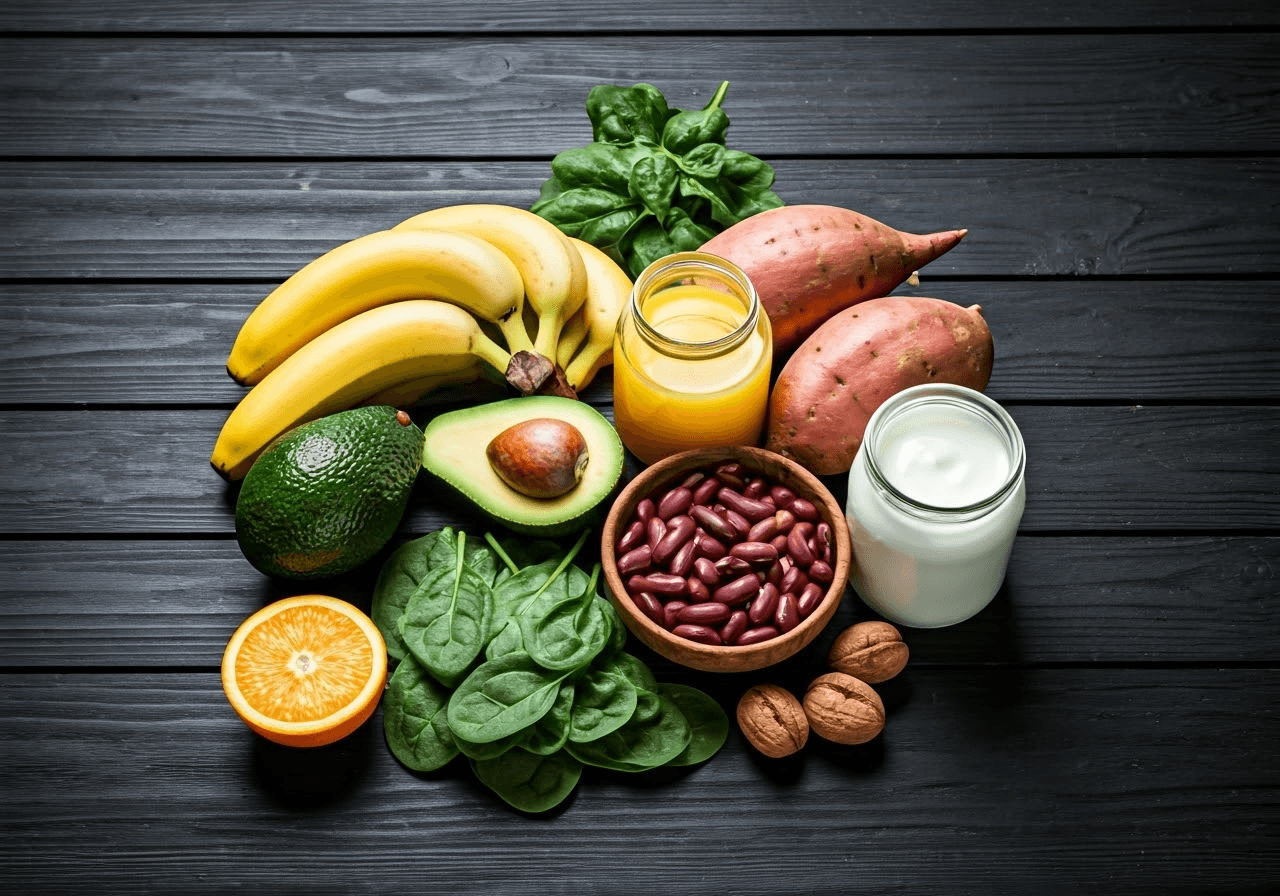
Introduction
Maintaining good potassium levels is important for your health. Many people, however, do not get enough of this key mineral. The good news is that there are many tasty sources of potassium you can add to your diet. Knowing how important potassium is and making sure you get enough can help you avoid health problems linked to low levels. Plus, you can enjoy the many benefits it brings.
What Is Potassium and Its Chemical Nature?
Potassium is a mineral and an electrolyte. This means it can carry a small electrical charge. This charge helps conduct electrical impulses in the body. Potassium has a positive charge and is labeled as K+.
In the body, most potassium is found inside the cells. It helps keep fluid balanced and controls cell size. Potassium is also important for sending nerve signals. This enables communication between the brain and the body. Additionally, potassium is key for muscle contractions, including those in the heart.
Different foods have different amounts of potassium. Foods that are high in potassium include fruits like bananas and avocados, vegetables like spinach and sweet potatoes, also legumes, nuts, and seeds. Eating a variety of these foods can help you get good potassium intake.
Why Potassium Is Important for Health
Potassium is very important for many functions in the body. It helps keep us healthy and well. One major role of potassium is to control blood pressure. This is key to preventing heart disease and stroke. Potassium works against sodium by helping the blood vessels relax. This reduces strain on the heart and veins.
In addition, potassium is needed for the muscles to work properly. It helps muscles contract and stops cramping or weakness. Having enough potassium also supports healthy nerve function. This helps send signals around the body, which is vital for many body processes.
Not getting enough potassium, known as potassium deficiency, can cause health problems. These include tiredness, muscle weakness, constipation, and heart rhythm issues. It may even increase the risk of kidney stones. Keeping potassium levels in check is very important for good health and to avoid such problems.
Health Benefits of Potassium
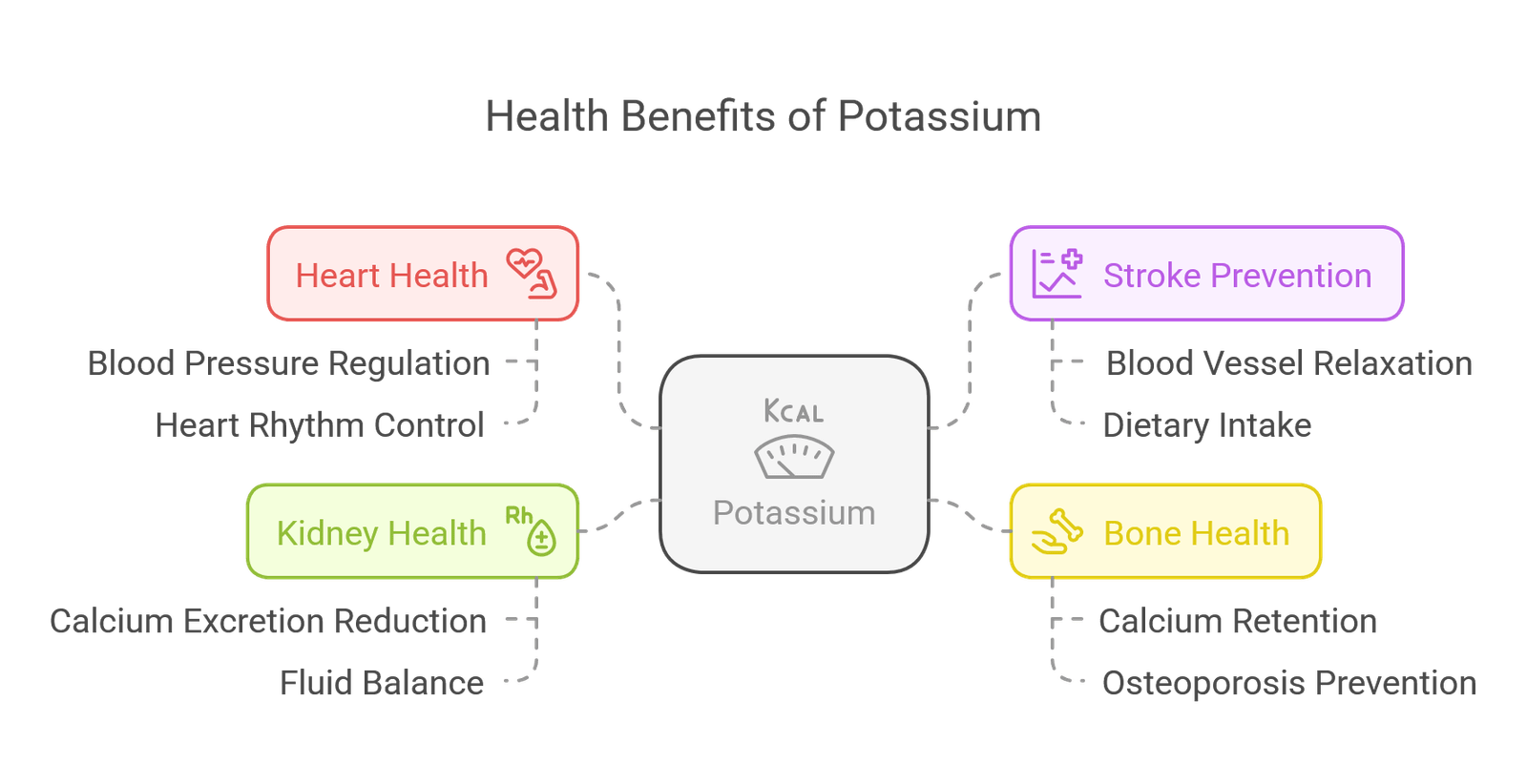
Potassium is important not just for basic functions in the body but also for good health. It helps keep the heart healthy, supports normal blood pressure, and lowers the chances of having a stroke.
In addition, potassium helps with bone health. It boosts bone mineral density and helps prevent calcium loss. It also plays a role in keeping the kidneys healthy. Potassium helps balance fluids and stops kidney stones from forming. To enjoy these health benefits and stay well, it’s important to have enough potassium in your diet.
Blood Pressure and Heart Health
Potassium is famous for helping with blood pressure, which is very important for heart health. It can lower blood pressure by working against the effects of sodium. When sodium levels get high, the body can hold onto water. This puts more strain on blood vessels, leading to higher blood pressure. Potassium helps get rid of extra sodium, helping to keep blood pressure levels healthy.
Also, potassium helps make blood vessel walls more relaxed. This further lowers blood pressure and eases the pressure on the heart and blood vessels. It reduces the chances of heart disease and stroke.
Keeping a healthy heart rhythm is another key part of heart health that potassium helps with. It controls how the heart’s electrical signals work, ensuring that your heartbeat stays regular and steady. This is essential for the heart to function well and reduce the risk of heart rhythm problems.
Stroke Prevention
Potassium is very important for managing blood pressure. High blood pressure can lead to strokes. When you have enough potassium, it helps lower blood pressure and relaxes blood vessel walls. This takes the pressure off the blood vessels in the brain and reduces the chance of having a stroke.
Research shows a strong link between eating a lot of potassium and a lower risk of stroke. People who have diets rich in potassium usually have fewer strokes than those who eat less potassium.
If you worry about your risk of stroke, talk to health professionals. They can help you review your potassium intake and see if you need any supplements. These experts can consider your personal risk factors and give you advice on how to keep your potassium levels high to help prevent strokes.
Bone Density and Osteoporosis
Potassium is an important nutrient that is often missed. It helps keep our bones healthy. Potassium can reduce acids in the body. This is key because acids can lead to losing calcium from our bones. By keeping calcium safe, potassium helps maintain bone mineral density. This density is important to stop osteoporosis.
Research shows that when we eat more potassium from fruits and veggies, our bone mineral density is higher. It can also lower the odds of osteoporosis. This happens because potassium can:
- Decrease calcium loss through urine
- Support bone formation
- Help with calcium absorption
So, adding more potassium-rich fruits and vegetables to your meals can lead to stronger bones. It can also help lower your chance of osteoporosis.
Kidney Stones and Other Benefits
Potassium can lower the chance of getting kidney stones. These stones are painful mineral lumps that form in the kidneys. Potassium helps by reducing the amount of calcium that goes out in urine. This can stop painful stones from forming.
More studies are needed to show a clear link, but some research connects good potassium intake with fewer kidney stones. This is especially important for people who have had kidney stones before or those who are more likely to get them.
People with kidney disease should talk to their doctor about their potassium intake. Too much potassium can be harmful to them. But for those who have healthy kidneys, getting enough potassium is good for kidney health. It may even help protect against kidney stones.
Dietary Sources of Potassium
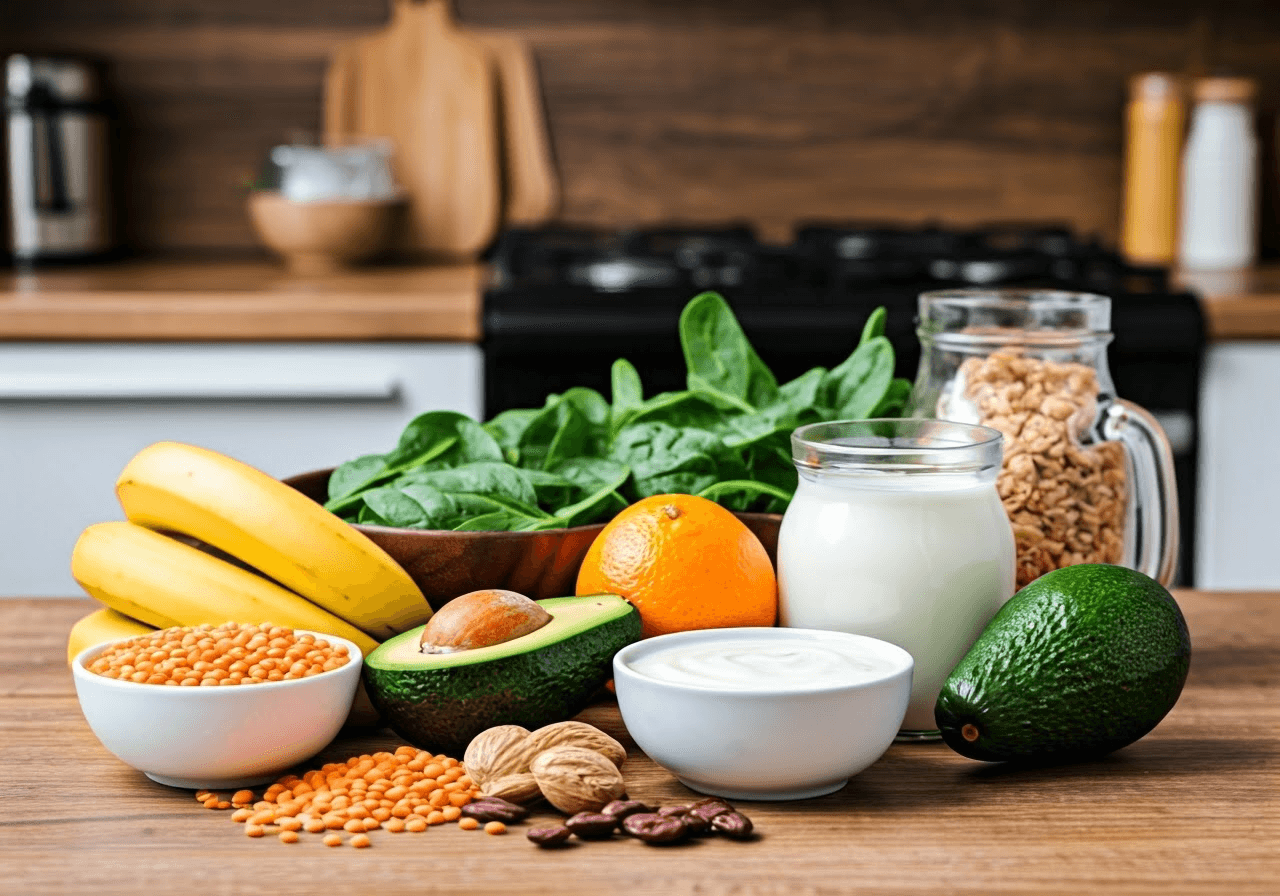
Increasing your potassium intake is easy when you add tasty and healthy foods to your meals. Fruits and vegetables are great sources. Some top choices are bananas, oranges, avocados, spinach, sweet potatoes, and beet greens.
You can also get potassium from other foods. Legumes like lentils and beans are good options. Nuts and seeds, such as almonds and sunflower seeds, are rich too. Dairy products like milk and yogurt are also great sources. By choosing different potassium-rich foods, you can improve your intake and help your overall health.
Fruits and Vegetables
Fruits and vegetables are some of the best sources of potassium. They are key to a diet with high potassium. Bananas are one of the most popular choices because they have a lot of potassium. Eating just one banana a day can help meet your daily potassium needs.
Citrus fruits, like oranges and orange juice, are also great for potassium. Starting your day with a glass of orange juice or having an orange as a snack can increase your potassium intake. Plus, you will get other important vitamins and minerals.
Leafy greens are also important. Spinach and beet greens have high levels of potassium. Adding these nutrient-rich greens to your meals in salads, smoothies, or as side dishes is a tasty way to raise your potassium levels.
Nuts, Seeds, and Legumes
Beyond fruits and vegetables, nuts, seeds, and legumes can also be good sources of potassium. They are valuable for a balanced diet. Almonds, cashews, and sunflower seeds are top choices in the nut and seed category.
For legumes, you should look at lentils, kidney beans, and black beans. These have a lot of potassium. Adding them to your meals, like in soups, stews, or salads, is a good way to get more potassium.
When you pick nuts, seeds, and legumes, try to choose unsalted or low-sodium options. This helps to keep your sodium intake low. Using a mix of these foods can help you meet your daily potassium needs as guided by dietary guidelines.
Fortified and Processed Foods
Whole, unprocessed foods should be the main part of a healthy diet. However, fortified and processed foods can also help you get enough potassium. Some breakfast cereals, plant-based milk, and certain types of bread are often fortified with potassium.
Potassium chloride is a common way to add potassium to processed foods. This does provide potassium, but be careful. Processed foods can have a lot of sodium, which may cancel out the benefits of potassium.
So, it’s not a good idea to depend only on fortified and processed foods for your potassium needs. Instead, focus on eating a variety of natural food sources. Keep track of the sodium in processed foods too. This way, you can make sure you meet the dietary reference intakes for both potassium and sodium.
Table: Top Potassium-Rich Foods and Their Benefits
| Food Item | Serving Size | Best For |
|---|---|---|
| Banana | 1 medium (118g) | Quick energy, post-workout snack |
| Avocado | ½ avocado (100g) | Heart health, plant-based fats |
| Sweet Potato | 1 medium (130g) | Bone support, anti-inflammatory diet |
| Spinach (cooked) | ½ cup (90g) | Iron boost, low-calorie nutrition |
| Beet Greens (cooked) | ½ cup (72g) | Detox support, high-mineral diets |
| Orange | 1 medium (131g) | Immunity boost, light hydration |
| Orange Juice | 1 cup (240ml) | Breakfast potassium shot |
| Lentils (cooked) | ½ cup (99g) | Vegetarian protein, blood sugar balance |
| Black Beans (cooked) | ½ cup (86g) | Gut health, fiber-rich meals |
| Almonds (unsalted) | 1 oz (28g) | Brain function, healthy snacking |
| Sunflower Seeds | 1 oz (28g) | Zinc source, heart-friendly snacks |
| Yogurt (plain, low-fat) | 1 cup (245g) | Gut health, calcium and potassium duo |
| Milk (low-fat) | 1 cup (240ml) | Bone health, hydration post-workout |
| Potato (baked, w/ skin) | 1 medium (173g) | Electrolyte recovery, high-energy meals |
How to Increase Potassium Intake Naturally
Increasing your potassium intake naturally is simpler than you may expect. You can start by adding foods that are high in potassium to your meals and snacks. For a snack, you could have a banana or a few almonds. You might also put spinach in your smoothies or replace white rice with quinoa.
Another easy way to get more potassium is by making smart choices. Instead of table salt, use herbs and spices to add taste to your food. Make sure to include a lot of fruits and vegetables in your snacks and meals. When you can, pick unsalted or low-sodium options for processed foods.
Daily Meal Planning for Boosting Potassium
Planning your meals can help you reach your daily potassium intake goals and follow healthy eating habits. Start your day with a breakfast high in potassium, like oatmeal with sliced bananas and some almonds.
For lunch, have a salad full of leafy greens such as spinach and kale. Add grilled chicken or tofu for protein and top it with vinaigrette dressing. For dinner, choose baked salmon with roasted sweet potatoes and asparagus, or enjoy lentil soup with whole-grain bread on the side.
By making smart choices and adding different potassium-rich foods throughout the day, you can meet your potassium needs while enjoying tasty and healthy meals. Don’t forget to talk to a healthcare professional or a registered dietitian for personal advice and meal planning tips that fit your dietary needs.
High-Potassium Snacks
Snacking can be a tasty and easy way to increase your potassium intake during the day. Choosing snacks that are high in potassium is especially helpful for those who find it hard to get enough through meals.
Some good options are a handful of trail mix made with nuts, seeds, and dried fruits, a small cup of yogurt with berries, sliced cucumbers dipped in hummus, or a banana spread with peanut butter.
Be sure to pick snacks that are mostly unprocessed and low in added sugars and unhealthy fats. If you have any health concerns or follow a special diet, talk to your health care provider or a registered dietitian. They can help you find the right kinds and amounts of high-potassium snacks that suit your needs.
Cooking Tips to Preserve Potassium
Cooking is important for making food taste good. However, some cooking methods can lead to potassium excretion. This means less potassium is available for your body to absorb. It’s best to use cooking methods that keep the potassium content high in your foods.
Steaming and microwaving are great options. They use little water, which helps keep nutrients. If you boil vegetables, use a small amount of water and cook them for a short time. This also helps preserve potassium. Roasting and grilling can keep potassium and add good flavors to your meals.
Try not to soak vegetables in water for long times. Doing so can wash away potassium. By using these easy cooking tips, you can make sure your meals have the most potassium content. This will help improve your health in many ways.
How Much Potassium Do You Need?
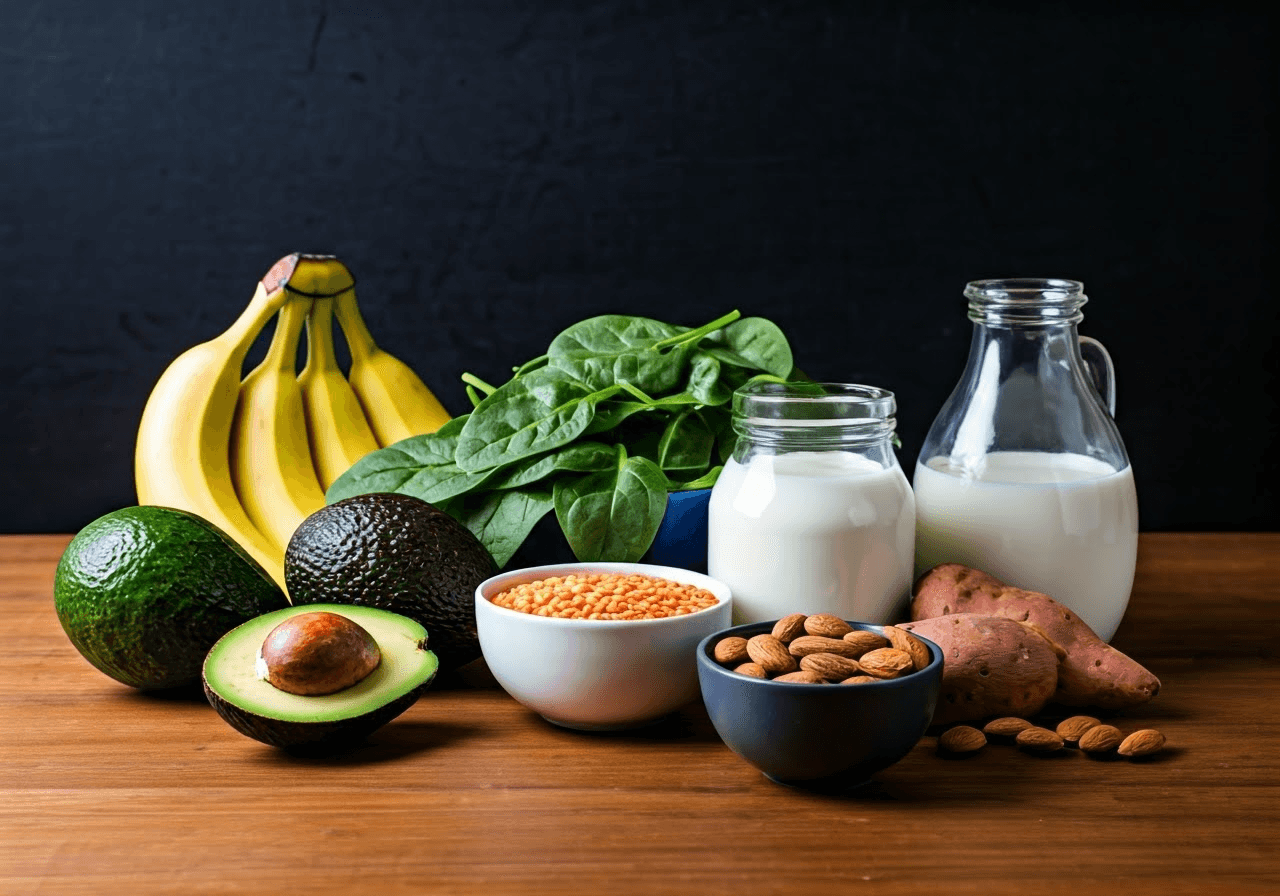
The amount of potassium you need each day depends on your age, sex, and health. In general, most adults should try to get about 2,600-3,400 mg of potassium daily. However, some groups like athletes and pregnant women may need more.
It is important to speak with a healthcare professional or registered dietitian to find out how much potassium is right for you. They can look at your diet, health history, and any medicines or supplements you take. This way, they can give you personalized advice to keep your potassium levels healthy.
Daily Guidelines by Age and Gender
The National Institutes of Health provides daily potassium intake guidelines based on age and gender, reflecting the varying needs throughout different life stages. These recommendations serve as a general framework for ensuring adequate potassium intake for most individuals.
| Life Stage | Recommended Amount |
|---|---|
| Infants (0-6 months) | 400 mg |
| Infants (7-12 months) | 860 mg |
| Children (1-3 years) | 2,000 mg |
| Children (4-8 years) | 2,300 mg |
| Children (9-13 years) | 2,300-2,500 mg |
| Teens (14-18 years) | 2,300-3,000 mg |
| Adults (19+ years) | 2,600-3,400 mg |
It’s important to note that these are general guidelines, and individual needs may vary. Factors such as activity levels, health conditions, and medications can influence potassium requirements.
Increased Needs for Athletes and Pregnancy
Athletes need more potassium because they exercise a lot and sweat more, which causes potassium loss. Keeping potassium levels good is important for muscle function, hydration, and recovery. Athletes should eat potassium-rich foods and drinks before, during, and after workouts to replace lost electrolytes.
Pregnant women also need more potassium. This is to help the baby grow and to support the mother’s increased blood volume. Having enough potassium during pregnancy helps keep fluid balance, regulates blood pressure, and prevents complications.
It’s important for athletes and pregnant women to talk to their healthcare providers or registered dietitians about their greater potassium needs. They can help find the right dietary plans and discuss whether supplements are needed.
Adjustments for Older Adults
The daily amount of potassium that older adults should take is mostly the same. However, some things can change how much they need. As people age, their bodies change, which can affect how they manage potassium. Certain health issues or medications that older adults often have can also impact potassium levels.
For example, people with kidney disease may have to reduce their potassium intake. This is because their kidneys might not filter out extra potassium well. On the other hand, older adults who take diuretics for high blood pressure may need to eat more potassium. This is because these medicines can cause more potassium to leave the body.
It’s very important for older adults to talk about their potassium intake with their health care providers. This is especially true if they have health problems or take medications that may change potassium levels. Regular check-ups and needed changes can help keep potassium balance right for this age group.
Potassium Absorption and Function in the Body
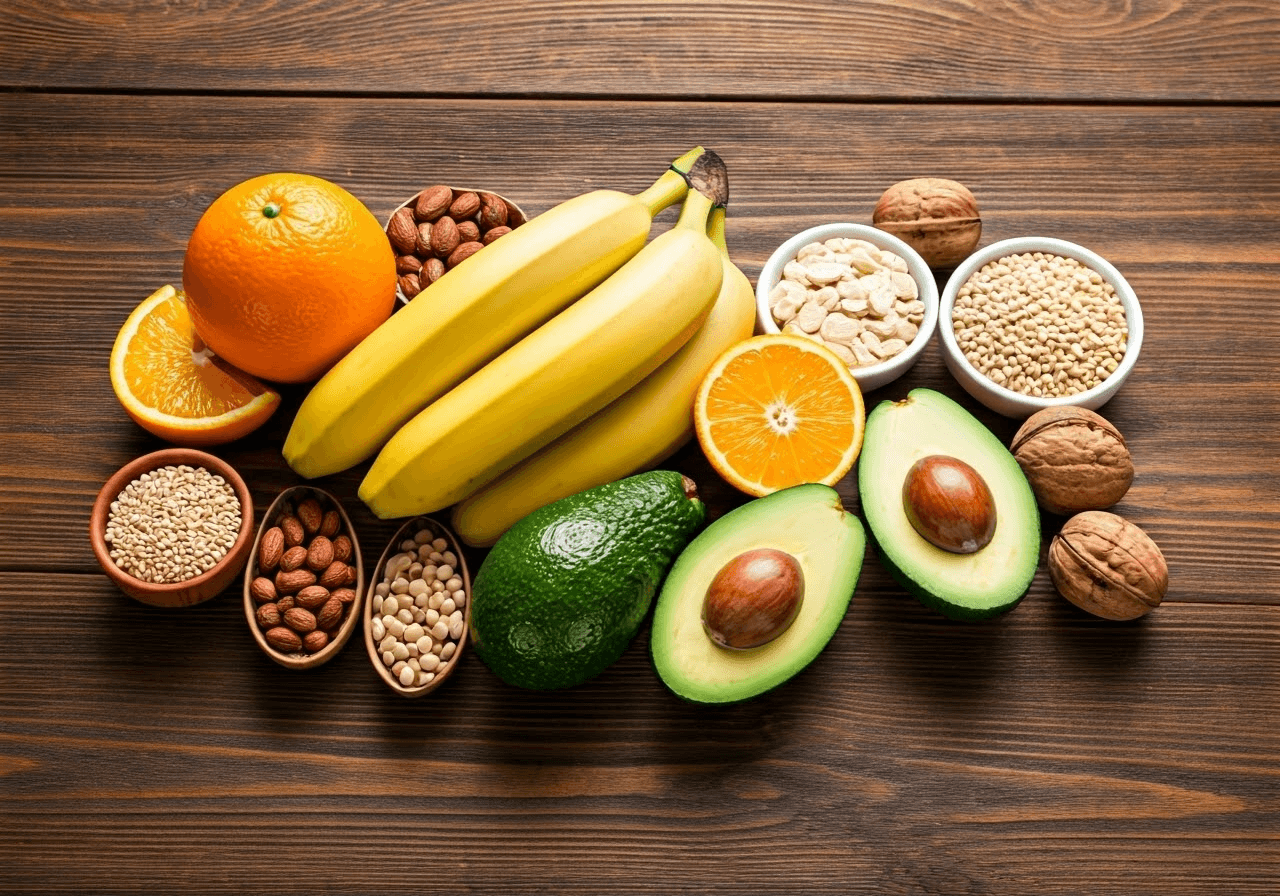
When you eat foods high in potassium, your body starts to absorb it mainly in the small intestine. This helps potassium get into the bloodstream. Once it’s in the blood, potassium travels to the cells and helps with many important things.
Potassium is crucial for keeping fluid balanced in cells. It also helps with muscle contractions, sends nerve signals, and supports good blood pressure.
Absorption in the Digestive System
Most potassium absorption happens in the small intestine, especially in the jejunum and ileum. The walls of the small intestine have special cells that help take in nutrients like potassium into the blood.
Once potassium is absorbed, it goes into circulation and travels to cells all over the body. Here, it supports health in many ways. These include maintaining fluid balance, controlling blood pressure, helping muscle and nerve function, and aiding digestion.
Some things can affect how well potassium is absorbed. These include the other nutrients present in the digestive tract, the health of the digestive system, and certain medications.
Role in Electrolyte Balance
Potassium is an important electrolyte. This means it carries an electrical charge in body fluids. It works together with other electrolytes like sodium, chloride, and magnesium. They all help keep the body’s electrolyte balance. This balance is necessary for many bodily functions.
Keeping the right electrolyte balance is important for fluid balance, nerve and muscle function, and maintaining acid-base balance in cells. If electrolytes are out of balance, like potassium, it can upset how cells work. This can lead to several health problems.
For example, low potassium levels, called hypokalemia, can lead to muscle weakness, tiredness, constipation, and issues with heart rhythm. On the flip side, high potassium levels, known as hyperkalemia, can cause nausea, vomiting, and muscle cramps. In serious cases, it can even lead to cardiac arrest.
Cellular, Muscular, and Nervous Function
Potassium is key for healthy muscles. It helps muscles contract and relax. When muscles contract, potassium ions move through cell membranes. This action leads to the shortening of muscles.
Keeping potassium levels steady is important. Low potassium can cause muscle cramps, weakness, and tiredness.
Potassium also helps with nervous function. It aids in sending nerve signals across the body. These signals are necessary for the brain and muscles to communicate. They are also important for how we sense things and for other body functions. If potassium levels are not balanced, it can disturb nerve function. This can cause issues with muscle control, coordination, and feeling.
Nutrient Interactions
Potassium works with many other nutrients in the body. This affects how the body absorbs, uses, and benefits from them. It’s important to understand these interactions to keep a good balance of nutrients and support overall health.
One key interaction is between potassium and magnesium. These minerals often help each other in the body. They support muscle and nerve function, help control blood pressure, and keep the balance of electrolytes. If there is not enough magnesium, it can lead to more potassium loss. This shows why it is important to get enough of both minerals.
Potassium also affects calcium. It can change how the body absorbs and gets rid of calcium. Both potassium and calcium are important for bone health, and keeping them in the right balance matters. Getting enough potassium may help reduce calcium loss in urine. This could help prevent kidney stones and support bone density.
Deficiency and Excess: Signs and Solutions
Potassium is found in many foods, but you can still become low in it. This can happen if you do not eat enough, have certain health issues, or take medicine that makes you lose potassium. Common signs of low potassium include muscle weakness, fatigue, constipation, and in serious situations, issues with heart rhythm.
Too much potassium, usually from supplements and not food, can cause hyperkalemia. This condition can make you feel sick, cause nausea and vomiting, lead to muscle cramps, and in severe cases, disturb how your heart works.
Causes and Symptoms of Deficiency (Hypokalemia)
Hypokalemia means you have low potassium levels in your blood. This condition can happen for many reasons. Not getting enough potassium-rich foods is one cause. Other causes include excessive sweating, kidney disease that affects how your body gets rid of potassium, and some medications, like diuretics.
If you have hypokalemia, you might notice symptoms like muscle weakness, muscle cramps, and feeling tired. It can also cause irregular heartbeats. Severe hypokalemia can lead to serious problems, like cardiac arrest. It is important to have the right amount of potassium in your body. This helps keep you healthy and prevents issues related to potassium deficiency.
High-Risk Groups for Low Potassium
Potassium deficiency can happen to anyone, but some people are more at risk because of certain factors that reduce potassium. The groups at higher risk include:
- People with chronic diseases: Long-term health issues like kidney disease, diabetes, and Crohn’s disease can affect how well potassium is controlled and can cause more loss of it.
- People taking certain medications: Diuretics, often used for high blood pressure, can lead to more potassium leaving the body through urine. Other drugs, like corticosteroids and laxatives, can also make potassium go down.
- People with eating disorders: Those dealing with eating disorders, like anorexia nervosa or bulimia, might not eat enough foods that are rich in potassium, which puts them at risk for a deficiency.
If you are in one of these high-risk groups, it’s important to talk to your doctor about your potassium levels. Make sure you get enough potassium from your food or consider supplements if needed.
Excess Potassium and Hyperkalemia
Potassium is important for health. But too much can cause a problem called hyperkalemia, which means high potassium levels in the blood. It’s rare to get hyperkalemia only from food. It can happen to people with kidney problems or those taking certain medicines that affect potassium excretion.
Hyperkalemia can cause several symptoms like:
- Nausea and vomiting: High potassium levels can upset the stomach, causing nausea and vomiting.
- Muscle weakness and fatigue: Too much potassium can upset the balance of electrolytes in muscles, leading to weakness and fatigue.
- Irregular heartbeat: Potassium helps to control heart rhythm. High levels can disrupt this, leading to abnormal heartbeats.
Most of the time, hyperkalemia is mild and can be handled by changing what you eat or by adjusting medicines. But severe hyperkalemia needs quick medical help because it can cause serious heart rhythm issues.
Diagnosis, Treatment, and Monitoring
Diagnosing potassium problems, whether too low or too high, usually starts with a blood test to check potassium levels. The doctor will look at the patient’s symptoms, health history, and medications to understand the results.
To treat low potassium levels, people often need to eat more foods rich in potassium or take potassium supplements if it’s very low. In contrast, managing high potassium levels may require changing the diet, adjusting medications, or, in serious cases, using medical treatments to get rid of the extra potassium.
It is very important to regularly check potassium levels for those with kidney disease or those using medications that can affect potassium balance. Depending on how bad the issue is, monitoring might include regular blood tests or other tests.
Table: Key Differences Between Hypokalemia and Hyperkalemia
| Category | Hypokalemia (Low Potassium) | Hyperkalemia (High Potassium) |
|---|---|---|
| Definition | Blood potassium < 3.5 mmol/L | Blood potassium > 5.0 mmol/L |
| Common Causes | – Diuretics – Vomiting/diarrhea – Poor diet – Eating disorders | – Kidney disease – ACE inhibitors – Excessive supplements – Severe burns/trauma |
| Key Symptoms | – Muscle weakness/cramps – Fatigue – Constipation – Irregular heartbeat | – Nausea/vomiting – Muscle weakness – Tingling/numbness – Dangerous heart rhythms |
| Emergency Signs | – Paralysis – Respiratory failure | – Cardiac arrest – Loss of consciousness |
| Diagnosis | Blood test + ECG (for heart abnormalities) | Blood test + ECG (peaked T waves) |
| Treatment | – Potassium-rich foods – Oral supplements – IV potassium (severe cases) | – Low-potassium diet – IV calcium/insulin – Dialysis (severe cases) |
| High-Risk Groups | – Diuretic users – Crohn’s disease patients – Anorexia patients | – Kidney disease patients – Elderly on multiple medications |
| Prevention | – Eat bananas, spinach, beans – Monitor meds with doctor | – Avoid salt substitutes – Regular kidney function tests |
Supplementation and Salt Substitutes
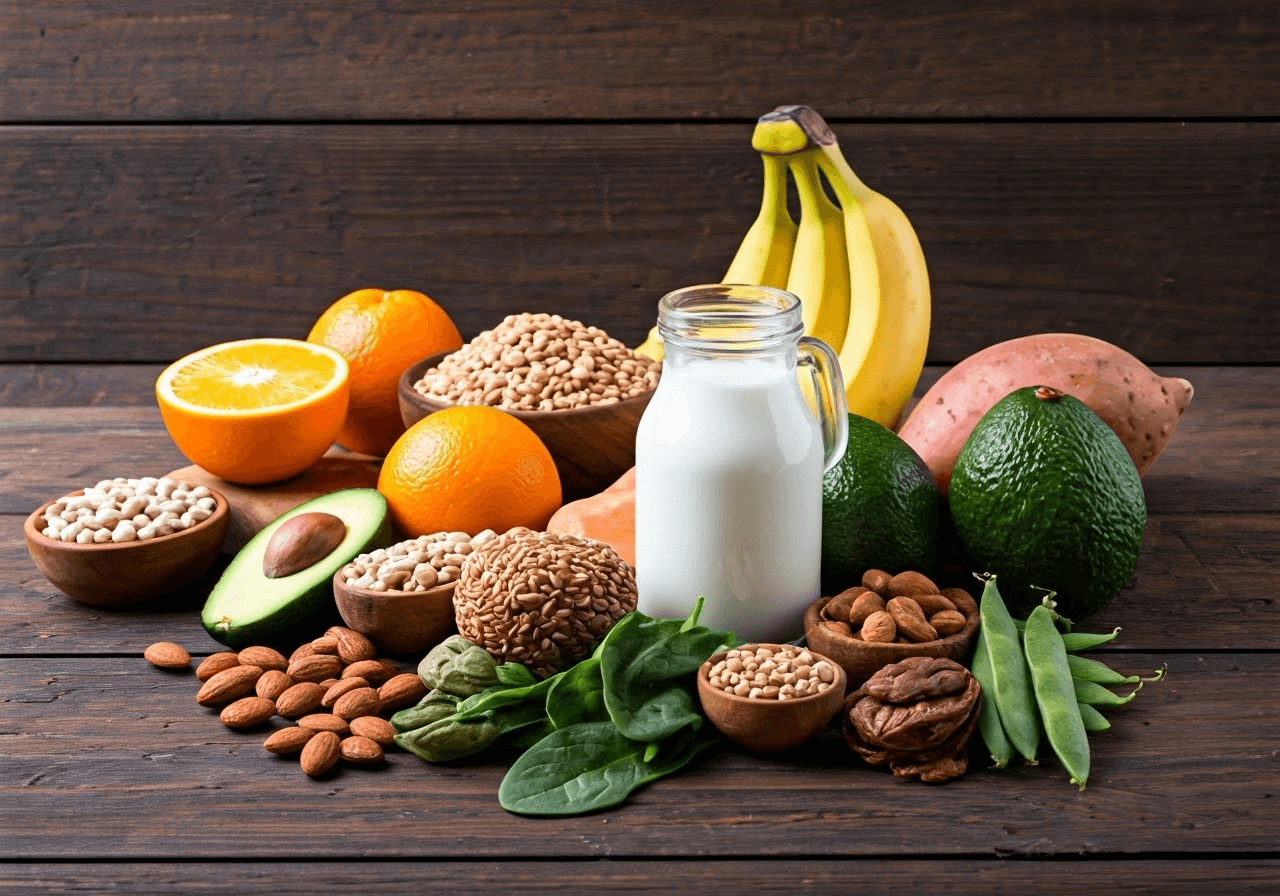
Getting potassium from a balanced diet is the best way. However, some situations might call for extra potassium. People who can’t get enough from their food, have certain health issues, or take medicines that lower potassium may need supplements.
Sometimes, doctors might suggest potassium salt substitutes instead of regular table salt. This is especially helpful for those with high blood pressure or for anyone who wants to lower their sodium intake.
When to Take Potassium Supplements
It’s best to get potassium from a balanced diet. But sometimes, you might need supplements. This is true for people who can’t meet their potassium needs through food. It may also apply to those with certain medical issues or who take potassium-lowering medications.
However, you should talk to health professionals before you start any potassium supplements. These supplements can interact with some medications. They might not be safe for everyone, especially people with kidney issues.
Taking potassium supplements without advice can be risky. It can cause imbalances, especially if you have health conditions or take other medications. Always check with a healthcare professional to find out if potassium supplements are right for you. They can help you figure out how much to take and what the risks and benefits are in your situation.
Balancing with Sodium, Magnesium, and Calcium
The right balance of potassium and other minerals, like sodium, magnesium, and calcium, is very important for keeping electrolytes in check and staying healthy. A good potassium-sodium ratio helps control blood pressure. Potassium can lower blood pressure, but too much sodium can make this effect weaker.
Magnesium and potassium usually work together to help muscles and nerves function well. If someone lacks one, it can affect the other. It’s important to get enough of both minerals.
Also, having the right amount of potassium and calcium is key for bone health and avoiding kidney stones. Potassium can help stop calcium from leaving the body through urine, but too much of either can upset this balance. Eating a balanced diet with enough of all these minerals is crucial.
Potassium Salt Substitutes: Benefits and Safety
Potassium salt substitutes are a popular choice instead of regular table salt. They are often seen as a healthier option. This is especially true for people with high blood pressure or those who want to lower their sodium intake. These substitutes usually replace some or all of the sodium chloride in regular salt with potassium chloride.
One main benefit of using potassium salt substitutes is it helps lower sodium intake. This can help with blood pressure management. But it’s important to remember that these substitutes still have chloride, so they should not be used too much.
People with kidney issues or those taking medicine that affects potassium levels should talk to their doctors before using potassium salt substitutes. Too much potassium can be dangerous for anyone who has kidney problems.
Table: Regular Salt vs. Potassium Salt Substitutes
| Type of Salt | Main Ingredient | Sodium Content (per 1 tsp) | Potassium Content (per 1 tsp) | Notes/Health Risks |
|---|---|---|---|---|
| Regular Table Salt | Sodium chloride | ~2,300 mg | 0 mg | Can raise blood pressure; not suitable for those with hypertension |
| Lite Salt (Mixed) | Sodium chloride + potassium chloride | ~1,100 mg | ~1,200 mg | Lower in sodium; not for people with kidney issues |
| Potassium Salt Substitute | Potassium chloride | 0–400 mg | ~2,500 mg | May help lower blood pressure; risky for kidney patients or those on potassium-retaining meds |
| Sea Salt | Sodium chloride (natural) | ~2,000 mg | 0 mg | Same risks as regular salt; perceived as “natural” but still high in sodium |
| Himalayan Pink Salt | Sodium chloride + trace minerals | ~2,000 mg | Minimal | Contains trace minerals; no real potassium benefit; still high in sodium |
Potassium in Medical and Dietary Contexts
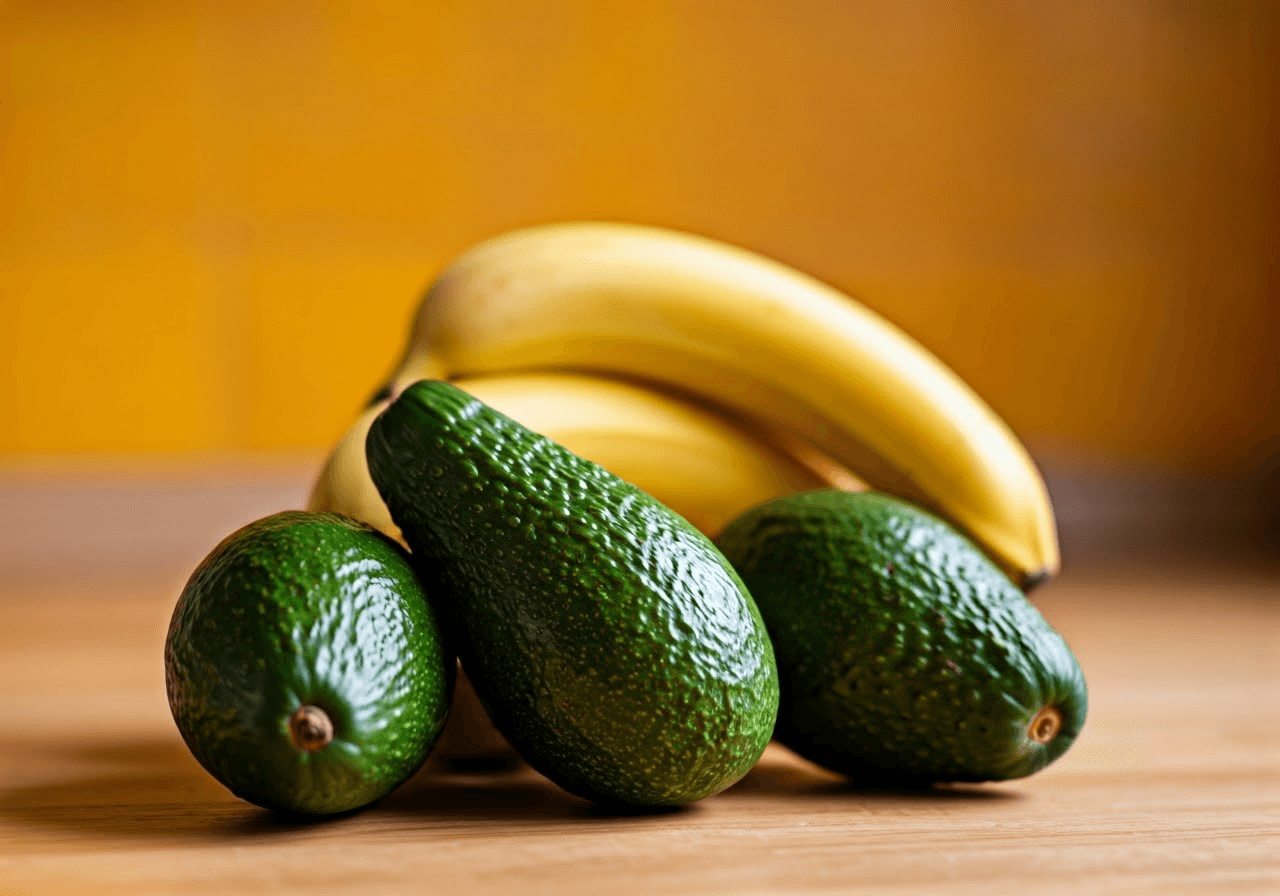
Understanding potassium is important not just for health and nutrition, but also for certain medical situations. For example, diets like the DASH diet focus on foods high in potassium to help manage blood pressure.
In hospitals, doctors watch potassium levels carefully, especially for patients who are admitted or having specific treatments. It’s important to keep potassium levels balanced for the body to work well. When potassium is too high or too low, it can affect how well patients recover and their overall health.
DASH and Plant-Based Diets
The DASH (Dietary Approaches to Stop Hypertension) diet is a well-known way to lower blood pressure and boost heart health. This diet focuses on eating fruits, vegetables, and low-fat dairy that are rich in potassium. It also advises reducing sodium, saturated fat, and cholesterol.
Plant-based diets are naturally full of fruits, vegetables, legumes, and whole grains. These foods usually have a lot of potassium, fitting well with dietary guidelines for potassium intake. By choosing more plant-based foods, people can raise their potassium levels while enjoying other health benefits from these diets.
Following the ideas of the DASH diet or choosing a plant-based diet can help people get enough potassium and improve their overall health and well-being.
Potassium in Hospital and Clinical Settings
In hospitals and clinics, doctors keep a close watch on potassium levels, especially for patients who are very sick, healing from surgery, or taking certain drugs. It’s important to maintain the right potassium balance because it helps the body function well. If levels are off, it can affect how patients recover.
Healthcare providers may give potassium through an IV to quickly fix serious deficiencies or provide it as pills to help with mild to moderate levels. They often run blood tests to check potassium levels and change treatments if necessary.
Patients in hospitals might also get advice on food, so they can eat more potassium-rich items as part of their meals. This helps maintain their potassium levels.
IV vs Oral Potassium Treatment
The decision to use intravenous (IV) or oral potassium treatment depends on how severe the deficiency is, the patient’s health condition, and other personal factors. IV treatment is usually only for severe potassium deficiency, when levels are very low, and quick correction is needed.
With IV potassium, the mineral goes straight into the bloodstream. This method helps increase potassium levels quickly. IV administration is done with careful medical supervision because fast infusions can cause heart problems.
In contrast, oral potassium supplements are used for mild to moderate deficiencies or to maintain potassium levels. These supplements come in different forms, such as tablets, capsules, or liquids. The choice of type and dose will depend on individual needs and preferences.
Side Effects and Safety Considerations
Potassium is important for good health. However, just like other nutrients, having too little or too much can cause problems. Eating a balanced diet that includes foods high in potassium is usually safe for most people. But there are times when you need to be careful.
People with kidney issues, for example, should watch their potassium intake closely. Their kidneys may struggle to remove extra potassium, which can lead to high potassium levels in the blood, known as hyperkalemia.
Toxicity and Overdose
Potassium toxicity usually happens when someone takes too many potassium supplements or, in rare cases, eats a lot of potassium-rich foods. This can cause a serious condition called hyperkalemia. Hyperkalemia happens when potassium levels in the blood get too high. This can mess up the heart’s electrical activity.
Signs of potassium toxicity include:
- Nausea and vomiting: Too much potassium can upset the stomach.
- Muscle weakness and fatigue: High potassium can disturb the balance of electrolytes in muscles, causing weakness and tiredness.
- Slow or irregular heartbeat: Potassium is important for keeping a normal heart rhythm. High levels can disrupt this and may lead to severe heart problems.
If you think you have potassium toxicity, get medical help right away. Treatment might include medicines to lower potassium levels, dialysis to clear extra potassium from the blood, or other types of support.
Medication Interactions
Potassium can affect how some medications work. This could change their effectiveness or raise the risk of side effects. It’s important to know about these interactions and take steps to keep yourself safe.
- ACE inhibitors and ARBs: ACE inhibitors and angiotensin II receptor blockers (ARBs) are often used for high blood pressure and heart failure. These medications may rise potassium levels in the blood.
- Potassium-sparing diuretics: These diuretics help the body hold onto potassium.
- NSAIDs: Nonsteroidal anti-inflammatory drugs (NSAIDs) like ibuprofen and naproxen can sometimes make it harder for the kidneys to remove potassium, which can lead to higher levels.
Always let your health care provider know about all the medications you take, whether they are prescription or over-the-counter, including any supplements. This can help avoid interactions and keep you safe.
When to See a Doctor
If you have mild potassium imbalances, you might not see clear symptoms. However, you should get medical help if you notice any of these signs:
- Severe muscle weakness or cramps: If your muscle weakness is so bad that you can’t move well or do daily tasks, get medical help.
- Irregular heartbeat or palpitations: If your heart starts racing, feels fluttery, or skips beats, you need to have it checked by a doctor.
- Signs of dehydration or fluid loss: Symptoms like being really thirsty, feeling dizzy or lightheaded, or not urinating much can signal a potassium imbalance. You should seek medical care immediately.
It’s important to spot and treat potassium imbalances early. This helps avoid bigger issues. If you worry about your potassium levels or see any strange symptoms, talk to your doctor or health care provider.
Conclusion
Potassium is an important nutrient that supports many functions in the body. It helps to regulate blood pressure and is also vital for muscle and nerve functions. Eating a balanced diet with enough potassium from fruits, vegetables, nuts, and legumes can greatly improve your health. However, it is important to be aware of both potassium deficiency and excess, as they can cause serious health problems. If you are an athlete needing more potassium or someone with health issues, it’s important to know your potassium needs. Always talk to healthcare professionals before making big changes to your diet or starting any supplements to make sure it’s safe and works well. With the right knowledge, you can make the most of this important nutrient for a healthier life. If you have more questions or need personalized advice, feel free to ask!
The content on WellwayHub.com is intended for general informational purposes only and should not be taken as medical advice. Please consult your doctor or a qualified health professional before making any changes to your health routine.
Some links on WellwayHub.com may be affiliate links. This means we may earn a small commission if you make a purchase through these links, at no extra cost to you. This helps support our mission to provide trusted wellness content.
Frequently Asked Questions
Low potassium, also known as hypokalemia, can lead to many problems. You might feel tired, have muscle cramps, feel weak, or get constipated. In serious cases, low potassium can affect your heart rhythm, which can be very risky for your health.
Foods high in potassium are bananas, oranges, and orange juice. You can also find it in leafy green vegetables like spinach, sweet potatoes, beans, lentils, avocado, and yogurt. Eating these foods can give you many health benefits.
It’s usually better to get potassium from food sources. Whole foods provide a good mix of potassium and other important nutrients. This helps improve health and reduces the chances of problems with nutrients mixing together.
To raise your potassium levels quickly and naturally, eat more foods that are high in potassium, such as bananas, sweet potatoes, spinach, and yogurt. Add these to your meals for a natural increase. Staying hydrated is important as well, so drink enough water to keep your electrolytes balanced.
High potassium levels, also called hyperkalemia, can cause muscle weakness, tingling feelings, and heart palpitations. You may also notice nausea, problems breathing, and in serious situations, cardiac arrest. It is important to keep track of your potassium intake to stay healthy.
Potassium can be dangerous for people with kidney disease. Their kidneys may find it hard to filter potassium, which can cause high levels in the blood. This may lead to serious problems. It’s important to keep track of potassium intake for those with kidney issues.
Yes, there are different quick tests for potassium deficiency. These include blood tests, urine tests, and an electrocardiogram (ECG). They can help find low potassium levels in the body. It is important to talk to a healthcare professional for a correct diagnosis and treatment options.
Potassium is very important for how muscles work. It helps prevent and relieve leg cramps. When potassium levels are low, it can cause muscle weakness and cramps. This is why it is essential to get enough of this mineral.